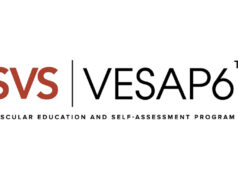I suspect that most members of the SVS are aware of the recent New York Times article entitled “Medicare payments surge for stents to unblock blood vessels in limbs” and which was the subject of our front page news article last month (http://vswebn.org/NYTstents). In that article Dr. Peter Lawrence, the President of the SVS, described steps that the SVS has taken to address the appropriateness of vascular interventions. It was his inspired leadership that led to his devoting the Stanley Crawford symposium at last year’s Vascular Annual Meeting specifically to the problem of unnecessary procedures. Those of you who have read my editorials over the last year will recognize that I also have been on a campaign against the indiscriminate use of both venous and endovascular procedures, especially by non–vascular physicians. However, we must acknowledge that even some of our own are abusing the system for financial gain.
One of the major points made by the New York Times article is that many of these unnecessary procedures are being performed by cardiologists in outpatient centers with little or no oversight. In full disclosure I must admit that my group does lease space in an outpatient center. I have also published on the benefits of such a center and the mechanism for its installation (J. Vasc. Surg. 2009; 49:1073-6).
The reimbursement for a procedure performed in a physician-owned or -leased outpatient facility is far greater than can be achieved in a hospital-owned facility. However, since the physician is responsible for the expenses incurred in such outpatient facilities, there is a financial incentive to do more with inexpensive devices that may be less effective. However, most vascular surgeons who utilize such centers will nevertheless do what is best for the patient in spite of higher costs. Further, patients may benefit from these centers because of convenience and for the provision of a more personable environment than can be found in a hospital inpatient or outpatient facility. Additionally, since the risk of complications from complex interventions, which can be difficult to manage in an outpatient facility, most ethical physicians will ensure that only the safest procedures are undertaken. Personally, I have performed more than 500 procedures in our facility over the last 7 years and have never encountered a pseudoaneurysm, retroperitoneal hematoma, or other complication needing hospitalization.
It is my belief that the excessive procedures delineated in the New York Times article are probably not representative of the majority of such centers. It is, however, quite true that there is no oversight or ombudsman to protect the patient in these outpatient facilities. Hospital-employed or university vascular surgeons may correctly imply that there is more oversight of procedures performed in hospital facilities and that this should limit unnecessary procedures. Needless to say, that is not the case in all institutions.
In our 600-bed municipal hospital, there is limited peer review and the few times when it has been applied it has, on occasion, resulted in legal suits against the reviewing medical staff. Additionally, institutions that reward practitioners based on relative value units may also induce a perverse incentive to overuse procedures.
As Dr. Lawrence describes in his article, site of service may not be the only driving force behind unnecessary interventions. In fact the Clinical Council of the SVS has seized upon appropriate care in office-based centers and is working on constructive suggestions to ensure not only that site of service is convenient for patients, but also that it provides appropriate high quality care. For the time being the SVS recognizes that we need improved oversight and peer review in these physician-owned centers, and that we should not simply abandon them because of the abusive behavior of a few unethical practitioners.
The New York Times article and Dr. Lawrence’s article and letter to the New York Times struck a chord with our membership. It has provoked an outpouring of comments and suggestions from our membership. Some of these are to be found in this edition as letters to the editor. It is apparent that many of us are horrified by what we are seeing, not only in outpatient facilities but also in hospitals.
I believe this is such an important issue that I have requested our associate editors to write a brief comment on their views on the matter and to specifically identify methods of rectifying the current overuse of vascular procedures (see the following 2 pages).
I am hopeful that the NY Times article and the responses we publish will instigate vascular surgeons to stand up for our profession and the well-being of our patients. For if we do not, we will continue to be marginalized by newspaper reporters and government agencies. They will continue to lump us together with interventionalists who may not follow the same ethical road that most of us travel.













